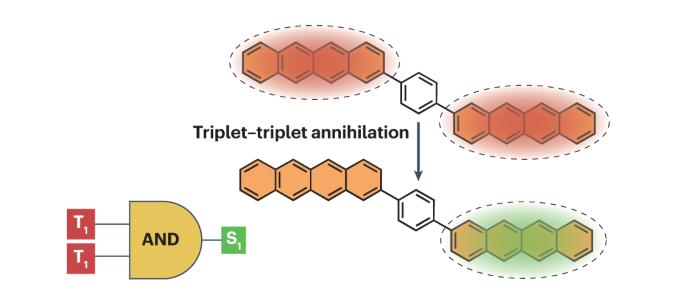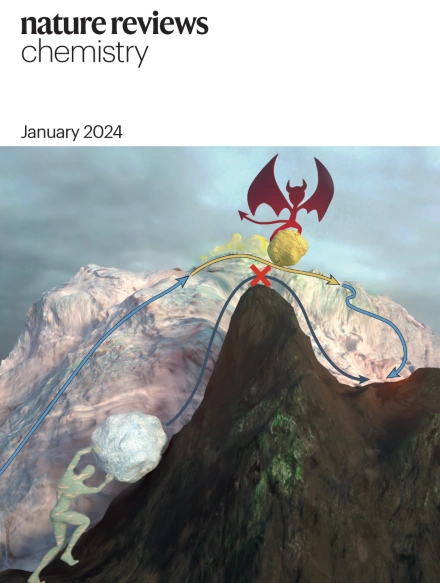A framework for multiexcitonic logic
IF 38.1
1区 化学
Q1 CHEMISTRY, MULTIDISCIPLINARY
引用次数: 0
Abstract
Exciton science sits at the intersection of chemical, optical and spin-based implementations of information processing, but using excitons to conduct logical operations remains relatively unexplored. Excitons encoding information could be read optically (photoexcitation–photoemission) or electrically (charge recombination–separation), travel through materials via exciton energy transfer, and interact with one another in stimuli-responsive molecular excitonic devices. Excitonic logic offers the potential to mediate electrical, optical and chemical information. Additionally, high-spin triplet and quintet (multi)excitons offer access to well defined spin states of relevance to magnetic field effects, classical spintronics and spin-based quantum information science. In this Roadmap, we propose a framework for developing excitonic computing based on singlet fission (SF) and triplet–triplet annihilation (TTA). Various molecular components capable of modulating SF/TTA for logical operations are suggested, including molecular photo-switching and multi-colour photoexcitation. We then outline a pathway for constructing excitonic logic devices, considering aspects of circuit assembly, logical operation synchronization, and exciton transport and amplification. Promising future directions and challenges are identified, and the potential for realizing excitonic computing in the near future is discussed. Performing logical operations with molecular excitons may provide opportunities for developing ultrafast, subnanometre and biocompatible computational architectures. This Roadmap outlines a framework for using multiexcitonic processes such as singlet fission and triplet–triplet annihilation to drive logical devices.


多光子逻辑框架
激子科学是化学、光学和基于自旋的信息处理方法的交叉点,但利用激子进行逻辑运算的研究仍相对欠缺。编码信息的激子可以通过光学(光激发-光发射)或电学(电荷重组-分离)读取,通过激子能量转移在材料中传播,并在刺激响应分子激子器件中相互作用。激子逻辑具有传递电子、光学和化学信息的潜力。此外,高自旋三重和五重(多)激子还能进入与磁场效应、经典自旋电子学和基于自旋的量子信息科学相关的定义明确的自旋态。在本路线图中,我们提出了一个基于单重子裂变(SF)和三重子-三重子湮灭(TTA)的激子计算开发框架。我们提出了能够调控 SF/TTA 进行逻辑运算的各种分子元件,包括分子光开关和多色光激发。然后,我们概述了构建激子逻辑器件的途径,考虑了电路组装、逻辑运算同步、激子传输和放大等方面。我们确定了未来的发展方向和挑战,并讨论了在不久的将来实现激子计算的潜力。
本文章由计算机程序翻译,如有差异,请以英文原文为准。
求助全文
约1分钟内获得全文
求助全文
来源期刊

Nature reviews. Chemistry
Chemical Engineering-General Chemical Engineering
CiteScore
52.80
自引率
0.80%
发文量
88
期刊介绍:
Nature Reviews Chemistry is an online-only journal that publishes Reviews, Perspectives, and Comments on various disciplines within chemistry. The Reviews aim to offer balanced and objective analyses of selected topics, providing clear descriptions of relevant scientific literature. The content is designed to be accessible to recent graduates in any chemistry-related discipline while also offering insights for principal investigators and industry-based research scientists. Additionally, Reviews should provide the authors' perspectives on future directions and opinions regarding the major challenges faced by researchers in the field.
 求助内容:
求助内容: 应助结果提醒方式:
应助结果提醒方式:


